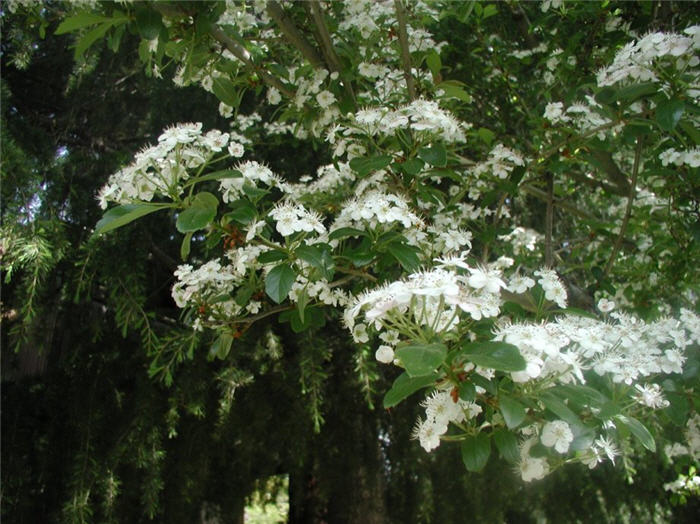| Botanical Name: Crataegus laevigata v. alba plena | |
| Common Name: White English Hawthorn |

-
Anatomy
-
Culture
-
Design
Plant Type
Tree
Height Range
12-25'
Flower Color
White
Flower Season
Spring
Leaf Color
Dark Green
Bark Color
Grey
Fruit Color
Red
Fruit Season
Summer, Fall
Sun
Full, Half
Water
High, Extra in Summer
Growth Rate
Moderate
Soil Type
Sandy, Clay, Loam, Rocky, Unparticular
Soil Condition
Average, Rich, Poor, Well-drained
Soil pH
Acid, Neutral, Basic
Adverse Factors
Messy, Thorns/Spines
Design Styles
English Cottage, Formal, Woodland
Accenting Features
Showy Flowers, Specimen
Seasonal Interest
Spring, Summer, Fall
Location Uses
Background, Entry, Shrub Border, Walls / Fences
Special Uses
Screen
Attracts Wildlife
Birds
Information by: Stephanie Duer
Photographer: Gordon Courtright
Photographer: Gordon Courtright
-
Description
-
Notes
English hawthorns is a twiggy, low-branched, dense, rounded tree, grwing about 15 to 20 feet tall and wide. Its foliage is a deep green, turning yellow in autumn. White flowers, in clusters, appear in mid Spring, and are followed by red berries that ripen in mid to late summer. White hawthorns have throny branches.
Hawthorns grow in full sun to part shade, in any well drained soil. They tolerate clay, loamy, or sandy soils; pH adaptive. Very twiggy; prune in late winter to early spring when structure is most apparent (see Guides); shearing makes them more twiggy.